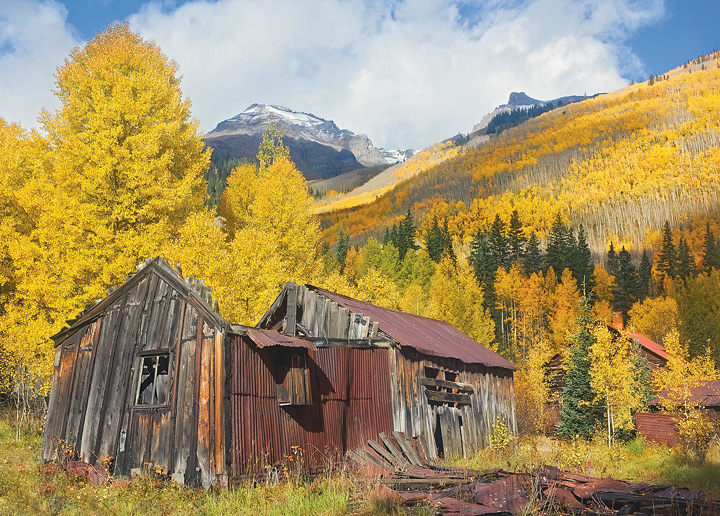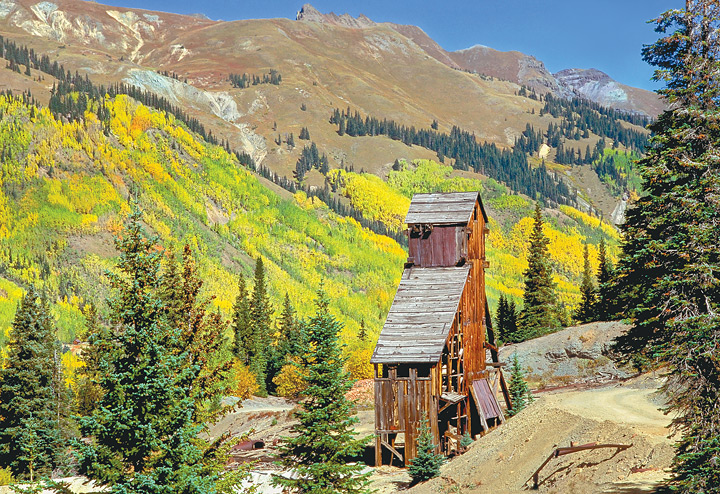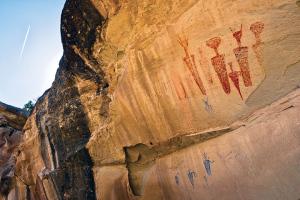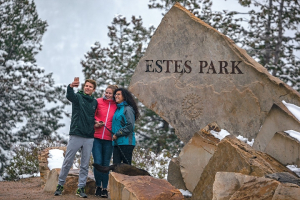11 Colorado Ghost Towns
Subscribe Now!Colorado's gold rush brought humanity and hardship to these rocky mountains. Mining towns popped up by the dozen, but just as quickly found themselves abandoned as the politics of man and nature shifted. The 11 ghost towns on our list might be haunted by the past, but it isn't hard to find the beauty in these booms gone bust.
(This story originally appeared in the September/October 2013 CL issue of Colorado Life Magazine)
BETWEEN THE LATE 19th and early 20th centuries, prospectors and pioneer homesteaders flocked to a crossroads called Colorado with dreams of striking it rich in rushes to claim gold, silver, coal and fertile farmland. In the frenzy to colonize a new frontier of opportunity, miners, ranchers and would-be entrepreneurs haphazardly built settlements in some of the state’s most inhospitable locations. Many of these towns brilliantly flashed like meteors in the mountain sky, busting within a few short years of their boom. Other towns gave way to the slow decay of time and neglect. Surprisingly, the extreme alpine and prairie environments that had proved to be too arduous for their original residents helped preserve these towns as they waited to be rediscovered, and in some cases renovated, by younger generations returning for their chance at the American dream. This autumn, explore 11 of the state’s ghost towns that survive today under startlingly scenic canopies of fall foliage, sunflower-filled fields and auras of history as rich as the lucky few who struck the mother lode in the heyday of gold rushes and land grabs.
1. CRYSTAL - Gunnison County
A longtime subject of postcards and calendar covers, the Crystal Mill may be the consummate picture of Colorado’s rustic past. Also known as the Sheep Mountain Powerhouse or Lost Horse Mill, the photogenic building was constructed in 1893 by promoters of the Sheep Mountain Mining Co. Its waterwheel on the Crystal River generated compressed air that miners used to power silver ore extraction machinery. In the late 19th Century the nearby town of Crystal had an average population of 500, but after the Sheep Mountain Mine closed in 1917 the mill fell into disrepair and fewer than 10 people remained. Today, part-time residents help maintain the mill, a jewel on the National Register of Historic Places. They use Crystal’s cabins as base camps for touring the spectacular outdoor recreational opportunities of the Elk Range. Mapping a trip to Crystal requires care. Some GPS navigation units may incorrectly suggest Forest Road 317 as the fastest route from Crested Butte. This road leads over Schofield Pass as well as a precipitous section deservedly called the Devil’s Punchbowl where entire families have perished when their vehicles careened over sheer walls. Crystal can more easily be reached from Marble on the tamer Gunnison County Road 3, though this road also requires a four-wheel drive vehicle.
2. ALTA - San Miguel County
Thank the pioneers of this town near Telluride every time you plug in your toaster. In 1891, creditors were about to take over Alta’s money-losing Gold King Mine. Lucien “L.L.” Nunn, a lawyer representing the mine, had an idea that flashed like a light bulb in his head. Realizing direct current electricity was extremely expensive for the mine to transmit over the long distances of the San Juan Mountains, Nunn turned to George Westinghouse and the theories of Nikola Tesla to construct a new power plant using alternating current methods. The result was the Ames Plant on the San Miguel River below Alta, which dramatically cut the mine’s electric bills. This first commercial use of AC was so successful that lines were strung across 13,000-foot Imogene Pass to power the Camp Bird Mine almost 20 miles away.
Despite these innovations, production in the mines eventually slowed, a fire burned Alta’s primary mill and vandalism took its toll in the mid-20th Century. Nevertheless, visitors may enjoy the same majestic view of 14er Wilson Peak through the windows of Alta’s lingering buildings as the mining mavens of old once did.
Subscribe to Colorado Life Magazine and receive thoughtful stories and beautiful photography featuring travel, history, food, nature and communities of Colorado.


















The information below is required for social login
Sign In
Create New Account